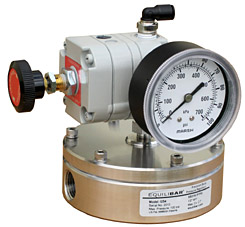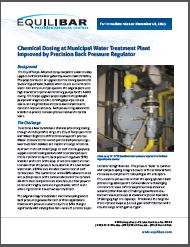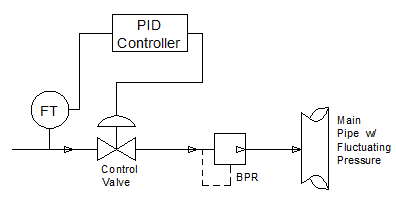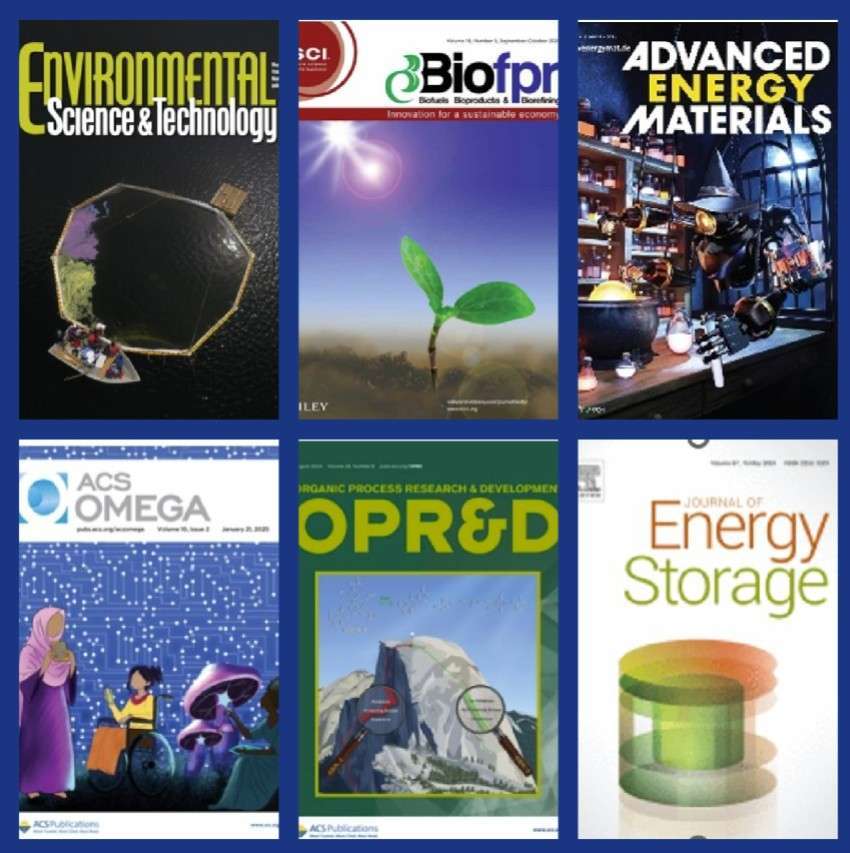However, one limitation of control valves in this approach is that unstable pressures in the upstream of downstream pressure piping can easily disrupt the flow rate, and PID loops are relatively slow at adjusting to these changes. For demanding dosing applications, it may be desirable to isolate the control valve from downstream pressure variations with the use of a back pressure regulator.

Unlike standard regulators, back pressure regulators control their inlet pressure, regardless of variations downstream or changes in flow. The addition of a BPR immediately downstream of a globe, needle, or ball style control valve can give a significant improvement in the quality of flow control.
Example: Sodium Hypochlorite injection in municipal water treatment facility
Suppose the upstream of the control valve was relatively stable at 50 psig, but the water header that the chemical is being injected into shifted between 5 and 25 psig due to the shutdown of a booster pump. This means that the differential pressure across the control valve dropped from 45 to 25 psig.
The set-point injection rate of chemical is 1.5 gallon/minute, so the control valve was adjusted to have a 0.22 Flow Coefficient (Cv). However, when the head pressure surged and the available differential pressure across the control valve dropped by 45%, the immediate result was that the chemical injection dropped to 1.15 GPM, a 25% reduction. (Note that flow rate through a control valve normally tracks according to the square root of the differential pressure)
The PID loop senses the flow rate deviation will increase the Cv of the control valve to 0.3 in the next few seconds (depending on how fast the loop is tuned and depending on the time constant in the flow meter).
If a back pressure regulator was installed to control the outlet of the control valve at 30 psig, then the flow rate would be stable despite changes in the downstream environment. The tuning of the valve would also be easier (and potentially faster) because the valve operates in a narrower range.

Equilibar® GS Series back pressure regulator with manual pilot pressure controller.
Equilibar® back pressure regulators provide especially stable pressure control through wide variations in flow conditions.
The Equilibar dome-loaded, multiple orifice technology works in a completely different way than traditional back pressure regulators and valves, and is especially useful in this application.

Customer Case Study: Using an Equilibar back pressure regulator to stabilize chemical dosing at the City of Tempe’s water treatment plant



